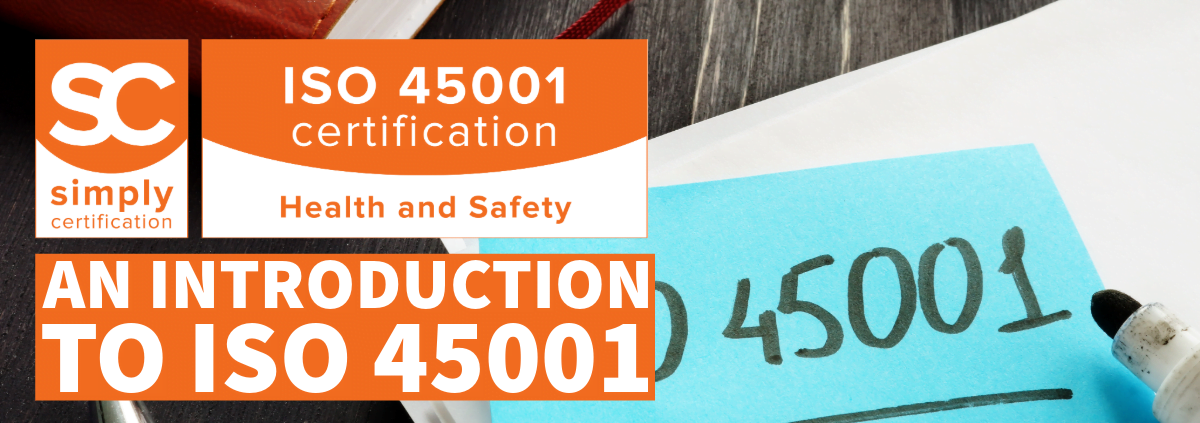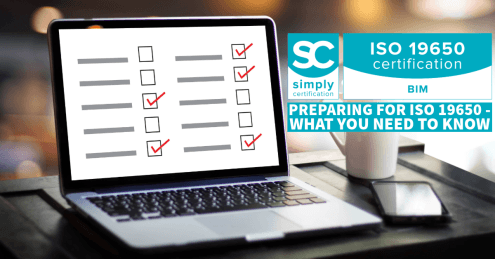An Introduction to ISO 45001: Occupational Health and Safety
Why do we need ISO standards – and what are they for?
With the rapid advancement of technology, manufacturing practices and chemical processes, ensuring the health, safety, and well-being of employees has become paramount for organisations across all industries.
To address these critical concerns, many businesses are increasingly turning to internationally recognised standards such as ISO 45001.
The 3 most popular ISO standards that companies choose to be certified against are ISO 45001 (Health and Safety Management), ISO 9001 (Quality Management Systems) and ISO 14001 (Environmental Management).
The basics – an introduction to ISO 45001
ISO 45001 is an international standard developed by the International Organisation for Standardisation (ISO) that sets out the requirements for an Occupational Health and Safety Management System (OHSMS).
It provides a framework for organisations to proactively manage occupational health and safety risks, prevent work-related injuries and illnesses, and promote a safe and healthy work environment for employees.
Ensuring the health and safety of workers is governed by a robust legal framework, including the Health and Safety at Work Act 1974 and various regulations enforced by the Health and Safety Executive (HSE).
ISO 45001 aligns with UK legislation and complements existing health and safety management systems, offering organisations a structured approach to managing occupational health and safety risks.
What are the 6 key principles of ISO 45001?
OHSMS principles offer an essential framework for the implementation of ISO 45001. The core principles help businesses to ensure health, safety and compliance for all stakeholders within and organisation. The key principles are:
- Leadership and Commitment
- Worker Participation
- Risk-Based Approach
- Legal Compliance
- Continuous Improvement
- Emergency Preparedness and Response
What do these principles mean for my business?
Leadership and Commitment
Top management demonstrates leadership and commitment to establishing, implementing, and continually improving the OHSMS.
Worker Participation
Workers are actively involved in health and safety decisions, hazard identification, and the development of safety procedures.
Risk-Based Approach
The organisation identifies and assesses occupational health and safety risks, implements controls to mitigate these risks, and continually monitors and reviews their effectiveness.
Legal Compliance
The organisation ensures compliance with applicable legal and regulatory requirements related to occupational health and safety.
Continuous Improvement
The OHSMS is continually reviewed and improved to enhance occupational health and safety performance and effectiveness.
Emergency Preparedness and Response
Businesses establish procedures for identifying and responding to emergency situations, including incidents and accidents.
What is the Implementation Process of ISO 45001?
Implementing ISO 45001 involves several key steps:
#1 Complete a Gap Analysis
A gap analysis is a great way to assess your current processes against ISO 45001 requirements to identify areas for improvement. We can help you with this if you need it.
#2 Leadership Commitment
Obtain commitment and support from top management to prioritise health and safety, allocate resources, and drive implementation efforts.
#3 Worker Participation
Engage workers at all levels in the development, implementation, and improvement of the OHSMS, fostering a culture of ownership and accountability.
#4 Risk Assessment
Identify and assess occupational health and safety risks associated with work activities, processes, and hazards present in the workplace.
#5 Control Measures
Implement controls to eliminate or minimise identified risks, including engineering controls, administrative controls, and personal protective equipment (PPE).
#6 Training and Awareness
Provide training and awareness programs to ensure that all employees understand their roles and responsibilities in maintaining a safe and healthy work environment.
#7 Documentation and Record-Keeping
Develop and maintain documented procedures, policies, and records required by ISO 45001 to demonstrate compliance and facilitate effective management of the OHSMS.
#8 Internal Audits
Conduct internal audits to assess the effectiveness of the OHSMS, identify areas for improvement, and ensure compliance with ISO 45001 requirements.
#9 Management Review
Review the performance of the OHSMS at regular intervals through management reviews, identifying opportunities for improvement and setting objectives for continual enhancement.
Finally – #10 Certification
Engage a third-party certification body to audit the OHSMS against ISO 45001 requirements and obtain certification upon successful compliance.
Top Tips for Certification
Many companies fail to get the basics right before they come to us for certification. As a certification body we must remain impartial when assessing the suitability for ISO and that means that we cannot help you with readying for certification.
However, there are several compliance consultancies that can help you do this. A good management system will also help you to carry out the correct procedures and create the right paperwork in readiness for certification.
If you are serious about certification, then get your business ready before you submit for certification. This will save you time and money dealing with any delays due to non-conformances.
Benefits of ISO 45001
This may seem like a daunting task, but Health and Safety policies are now the responsibility of all businesses in the UK, following the Health and Safety Act 1974.
Depending on the size and complexity of your business and the industry that you operate in, there are mandatory things you must do as a UK-based business.
Holding ISO 45001 signals to your stakeholders that you are willing to go the extra mile to protect your people and customers from harm.
In return you will benefit from:
Reduced Risk of Workplace Incidents
ISO 45001 helps organisations identify and mitigate occupational health and safety risks, reducing the likelihood of work-related accidents, injuries, and illnesses.
Improved Compliance
Compliance with ISO 45001 demonstrates a commitment to meeting legal and regulatory requirements related to occupational health and safety, reducing the risk of penalties and sanctions.
Enhanced Reputation
ISO 45001 certification enhances your reputation as a responsible employer that prioritises the health, safety, and well-being of its employees, customers, and stakeholders.
Increased Employee Engagement (and Productivity)
Involving employees in health and safety decision-making fosters a culture of engagement, empowerment, and ownership, leading to higher morale and productivity.
Cost Savings
Effective management of occupational health and safety risks can lead to cost savings through reduced absenteeism, insurance premiums, compensation claims, and downtime associated with workplace incidents.
Competitive Advantage and Access to Opportunities
ISO 45001 certification can provide a competitive edge in the marketplace, demonstrating to customers, suppliers, and partners that you are committed to excellence in occupational health and safety management. Holding ISO 45001 will also open up new opportunities for supply chains that require more sophisticated business operators.
By aligning with ISO 45001 requirements, you can enhance your health and safety performance, comply with legal and regulatory requirements, and reap numerous benefits, including improved reputation, employee engagement, and cost savings. This in turn leads to increased competitiveness, credibility, and customer satisfaction, sowing the seeds for sustained success in today’s dynamic and global marketplace.
If you are ready for certification you can speak to our friendly team. Or, if you’re not sure where you are currently, contact us today to book a Gap Analysis.






